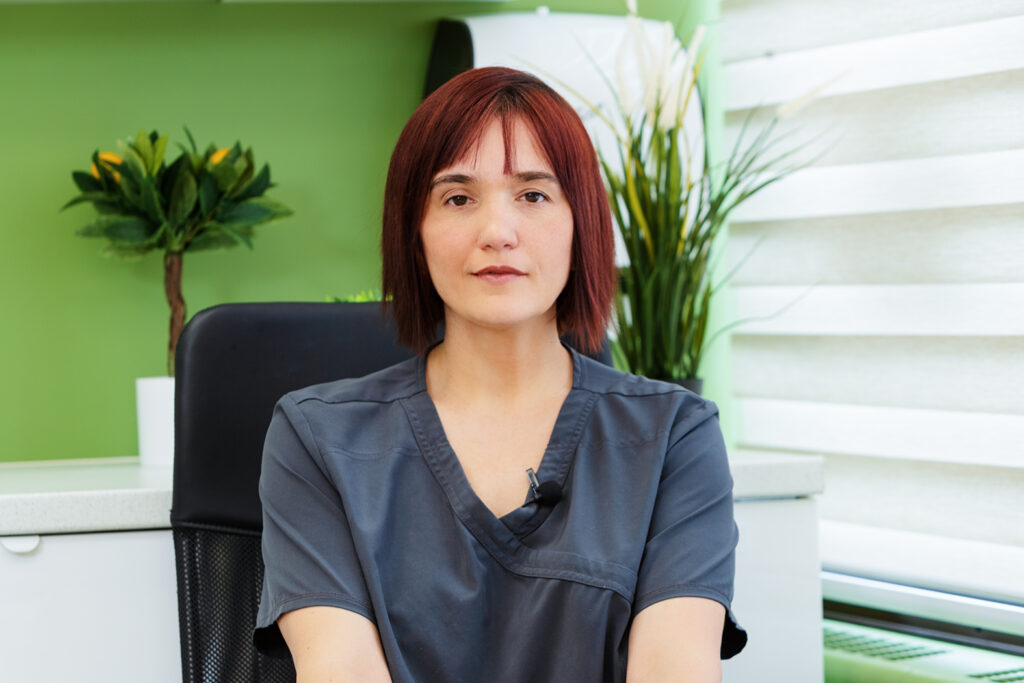Interview offered by Dr. Veronika Kivenko, “Labelle” Medical and Aesthetic Clinic
Redness of the face and dilated blood vessels on the face
Quite often in everyday life we have to observe people with facial redness, dilated vessels on the face, and there is information that this condition can be effectively improved with laser treatment?
In fact, IPL (intense pulsed light) and near infrared lasers are effective in treating facial erythema and telangiectasia.
What is the basis of this treatment?
Intense pulsed light uses the principle of selective photothermolysis in the treatment of vascular skin lesions. The treatment results in selective coagulation of superficial vessels without further damage to the skin and has been shown to be effective in the treatment of vascular lesions such as telangiectasias.
Speaking of this skin condition, I would like to know more about what type of condition it is?
Rosacea is a chronic inflammatory dermatosis characterized by short-lived or persistent redness of the midface, telangiectasias, papules and pustules. This condition is associated with a specific condition of the blood vessels and sebaceous glands of the superficial layers of the skin.
Are there well-defined causes of this disease?
The etiology of rosacea is unknown, but it is probably multifactorial. Factors involved in the pathophysiology include the dense presence of sebaceous glands on the face, the physiology of nerve innervation, and the vascular composition of the skin. Many triggers initiate or exacerbate the clinical manifestations of rosacea, including ultraviolet radiation, heat, spicy foods and alcohol, wind, strenuous exercise, and hot weather.
A tendency for rosacea in people of Celtic or Northern European descent suggests a genetic component of rosacea.
Is laser treatment the only choice?
Finally, there is also a pharmacotherapy of this pathology with variable effectiveness.
Among others, mention should be made of topical agents such as lotion and cream; azelaic acid gel, brimonidine gel); and more recently topical ivermectin cream.
The oral antibiotic doxycycline is used more frequently to treat papulopustular and ocular rosacea.
Let’s go back to the use of laser to treat rosacea. How effective is it?
According to a series of studies conducted for the treatment of telangiectasias and cutaneous erythema associated with rosacea, there was a significant improvement in the clinical course of rosacea, a decrease in the response to triggering factors and a decrease in the percentage relapses during 2-year follow-up after IPL treatment.
Pretreatment for Demodex folliculorum (a parasite often found in cases of papulopustular rosacea) has shown more effective treatment results.
What is the frequency and duration of treatment?
Usually we are talking about 3-5 treatment sessions of 20 minutes with an interval of 3-4 weeks. It should be noted that IPL has the advantage of covering larger areas of skin, requires less time and is more likely to be well tolerated by patients. In addition, the IPL treatment helps reduce pigmentation, eliminate fine lines, as well as smooth and firm the skin.
In conclusion, I want to emphasize that you can get advice on the treatment and the treatment itself at the Labelle clinic.
Wishing you good health,
Dr. Veronika Kivenko.
“Labelle” Medical and Aesthetic Clinic
Mob: 514-516-6624 / Tel: 514-933-7014
contact@cliniquemedestlabelle.com
www.cliniquemedestlabelle.com
400 Boulevard du Curé-Labelle, Laval, QC H7V 2S7 (suite 302)

